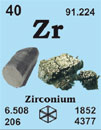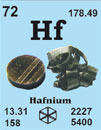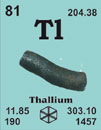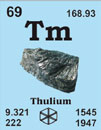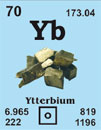Material, Technologie
& Kristalle GmbH
& Kristalle GmbH
Ihre Verbindung zu uns

-
 English
English
-
 Deutsch
Deutsch
Warenkorb
0
Artikel
Artikel
Keine Artikel
0,00 €
Gesamt
Gesamt zzgl. MwSt.
Artikel wurde in den Korb gelegt
Menge
Sie haben 0 Artikel in Ihrem Warenkorb.
Es gibt 1 Artikel in Ihrem Warenkorb.
Versandkosten (o. MwSt.)
noch festzulegen
Gesamt
(o. MwSt.)
Yttrium (Y)
Wir sind führender Hersteller und Lieferant von Forschungsmaterialien
Yttrium 39Y88.905
1794 von J. Gadolin in Åbo, Finnland, entdeckt.
[Nach Ytterby, Schweden, benannt]
French: yttrium
English: yttrium
Italian: ittrio
Spanish: ytrio
Beschreibung: Weiches, silberweißes Metall. Luftbeständig, da es durch eine Oxidhaut passiviert is. Verbrennt leicht. Reagiert mit Wasser unter Wasserstoffentwicklung. Verwendung: Rotphosphor für das Farbfernsehen; Supraleiter; magnetische Legierungen.
Yttrium single crystal properties
| State: | single crystal |
|---|---|
| Crystal structure: | hexagonal |
| Production method: | Floating zone |
| Standard size: | diameter 4mm thickness 1mm |
| Orientation: | (0001) |
| Orientation accuracy: | <2°, <1°, <0.4° or <0.1° |
| Polishing: | as cut, one or two sides polished |
| Roughness of surface: | <0.03µm |
| Purity: | 99.95% |
| Typical analysis (ppm): | C 3 H < 1 O 9 N < 5 Cu 1.60 Fe 1.80 Ni < 1 Pb 0.30 Si 0.30 Ga, Hf and Ta are below the detection limit |
Materials properties
| Density: | 4.47 g/cm3 |
|---|---|
| Melting point: | 1521.85 °C / 1795 °K |
| Boiling point: | 3337.85 °C / 3611 °K |
| Molar volume: | 19.89 cm3 |
| Thermal conductivity: | 17.2 [300 K] Wm-1K-1 |
| Coefficient of linear thermal expansion: | 10.6 x 10-6 K-1 |
| Electrical resistivity: | 57.0x 10-8 [298 K] Wm |
| Mass magnetic susceptibility: | +2.70 x 10-8(s) kg-1m3 |
| Young's modulus: | 66.3 GPa |
| Rigidity modulus: | 25.5 GPa |
| Bulk modulus: | n.a. GPa |
| Poisson's ratio: | 0.265 GPa |
| Radii: | Y3+ 106; atomic 181; covalent 162 |
| Electronegativity: | 1.22 (Pauling); 1.11 (Allred); 3.19 eV (absolute) |
| Effective nuclear charge: | 3.00 (Slater); 6.26 (Clementi); 8.72 (Froese-Fischer) |
| Number of Isotopes (incl. nuclear isomers): | 32 |
| Issotope mass range: | 80 -> 99 |
| Crystal structure, (cell dimentions / pm), space group | hexagonal |
| X-ray diffraction: mass absorption coefficients: | CuKα 134 (µ/r) / cm2g-1 MoKα 100 (µ/r) / cm2g-1 |
| Neutron scattering length: | 0.775 b/10-12 cm |
| Thermal neutron capture cross-section: | 1.28 sa / barns |
Biological data
| Biological role: | none |
|---|---|
| Toxicity | |
| Toxic intake: | n.a. |
| Lethal intake: | c. 15 g only one case reported) |
| Hazards: | Bismuth is regarded as one of the less toxic heavy metals and it is commonly used as a medicine for stomach upsets. Excess bismuth can cause mild kidney damage |
| Level in humans | |
| Blood: | 0.016 mg dm-3 |
| Bone: | <0.2 p.p.m. |
| Liver: | 0.015 - 0.33 p.p.m. |
| Muscle: | 0.32 p.p.m. |
| Daily dietary intake: | 0.005 - 0.02 mg |
| Total mass of element in average [70 kg] person: | < 0.5 mg |
Geological data
| Mineral | Formula | Density | Hardness | Crystal apperance |
|---|---|---|---|---|
| Bastnäsite-Y | (Y, Ce)Co3F | 4.0 | 4 - 4.5 | tri. translucent brick-red |
| Fergusonite | YNbO4 | 5.7 | 5.5 - 6.5 | tet., vitreous, sub-metallic black |
| Gadolinite | Be2FeY2Si2O10 | 4.4 | 6.5 - 7 | mon., vit./greasy greenish-black |
| Polycrase-Y | Y(Ti, Nb)2(O, OH)6 | 5.0 | 5.5 - 6 | orth., sub-metallic black |
| Samarskite | AlO(OH) | 3.3 - 3.5 | 6.5 - 7 | orth., vit./resinous |
| Xenotime/TD> | YPO4 | 4.8 | 4 - 5 | tet., vit./resinous yellow-brown |
| Chief ore: | xenotime, bastnäsite, fergusonite, samarskite |
|---|---|
| World production: | 400 tonnes/year |
| Main mining areas: | xenitine in USA, bastnäsite in Russia, fergusonite in Norway, Russia, Madagascar |
| Reserves: | c. 9 x 106 tonnes |
| Specimen: | available as chieps, ingots or powder. Safe. |
| Abundances | |
|---|---|
| Sun: | 125 (relative to H = 1 x 1012) |
| Earth's crust: | 30 p.p.m. |
| Seawater: | |
| Residence time: | |
| Classification: | |
| Oxidation state: | III |
Übersicht der Elemente mit Zugang zu unserem Shop
Tel.: +49 (0) 2461 - 9352 - 0
Fax: +49 (0) 2461 - 9352 - 11
Fax: +49 (0) 2461 - 9352 - 11








































